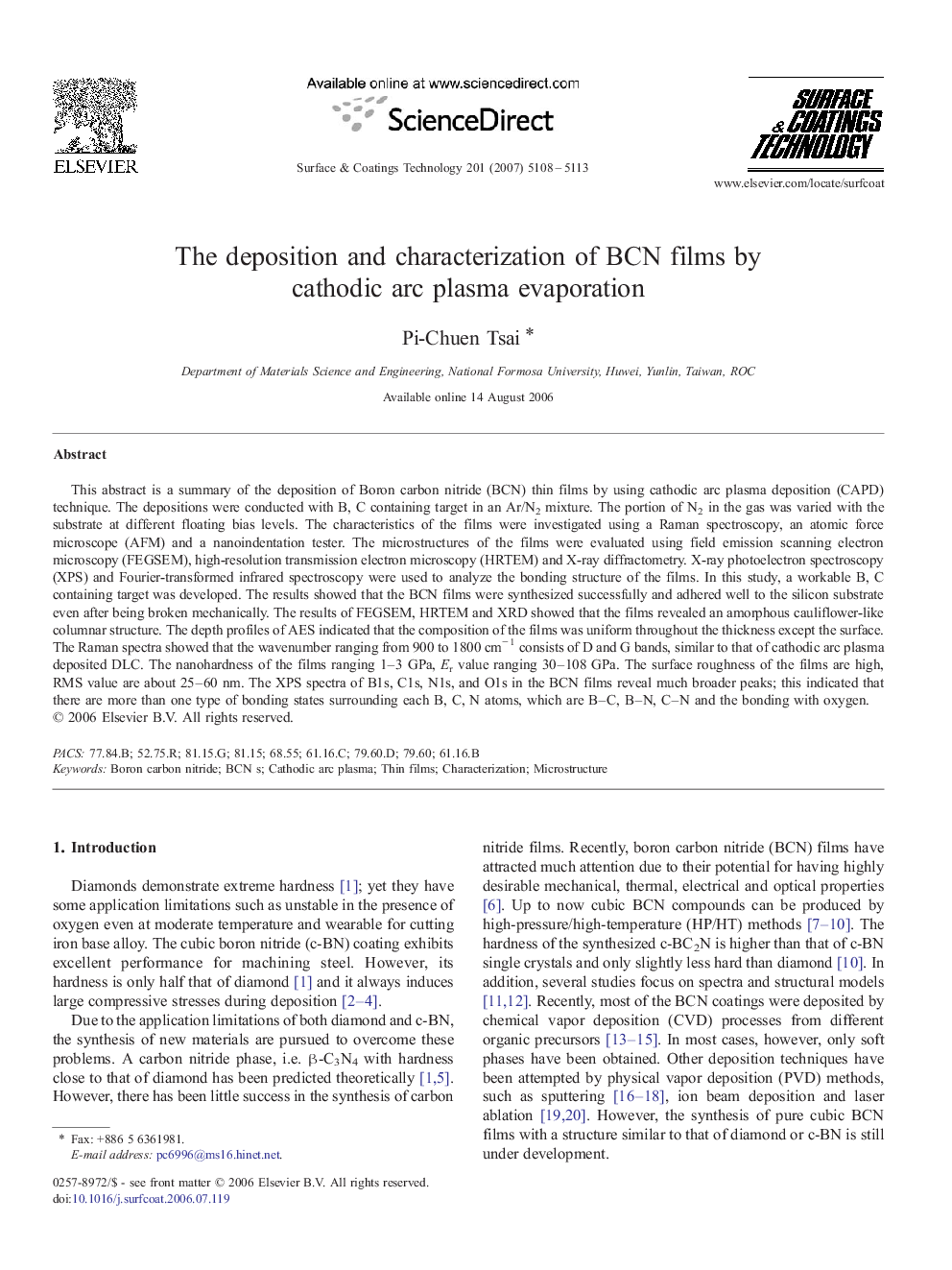| Article ID | Journal | Published Year | Pages | File Type |
|---|---|---|---|---|
| 1661595 | Surface and Coatings Technology | 2007 | 6 Pages |
This abstract is a summary of the deposition of Boron carbon nitride (BCN) thin films by using cathodic arc plasma deposition (CAPD) technique. The depositions were conducted with B, C containing target in an Ar/N2 mixture. The portion of N2 in the gas was varied with the substrate at different floating bias levels. The characteristics of the films were investigated using a Raman spectroscopy, an atomic force microscope (AFM) and a nanoindentation tester. The microstructures of the films were evaluated using field emission scanning electron microscopy (FEGSEM), high-resolution transmission electron microscopy (HRTEM) and X-ray diffractometry. X-ray photoelectron spectroscopy (XPS) and Fourier-transformed infrared spectroscopy were used to analyze the bonding structure of the films. In this study, a workable B, C containing target was developed. The results showed that the BCN films were synthesized successfully and adhered well to the silicon substrate even after being broken mechanically. The results of FEGSEM, HRTEM and XRD showed that the films revealed an amorphous cauliflower-like columnar structure. The depth profiles of AES indicated that the composition of the films was uniform throughout the thickness except the surface. The Raman spectra showed that the wavenumber ranging from 900 to 1800 cm− 1 consists of D and G bands, similar to that of cathodic arc plasma deposited DLC. The nanohardness of the films ranging 1–3 GPa, Er value ranging 30–108 GPa. The surface roughness of the films are high, RMS value are about 25–60 nm. The XPS spectra of B1s, C1s, N1s, and O1s in the BCN films reveal much broader peaks; this indicated that there are more than one type of bonding states surrounding each B, C, N atoms, which are B–C, B–N, C–N and the bonding with oxygen.
